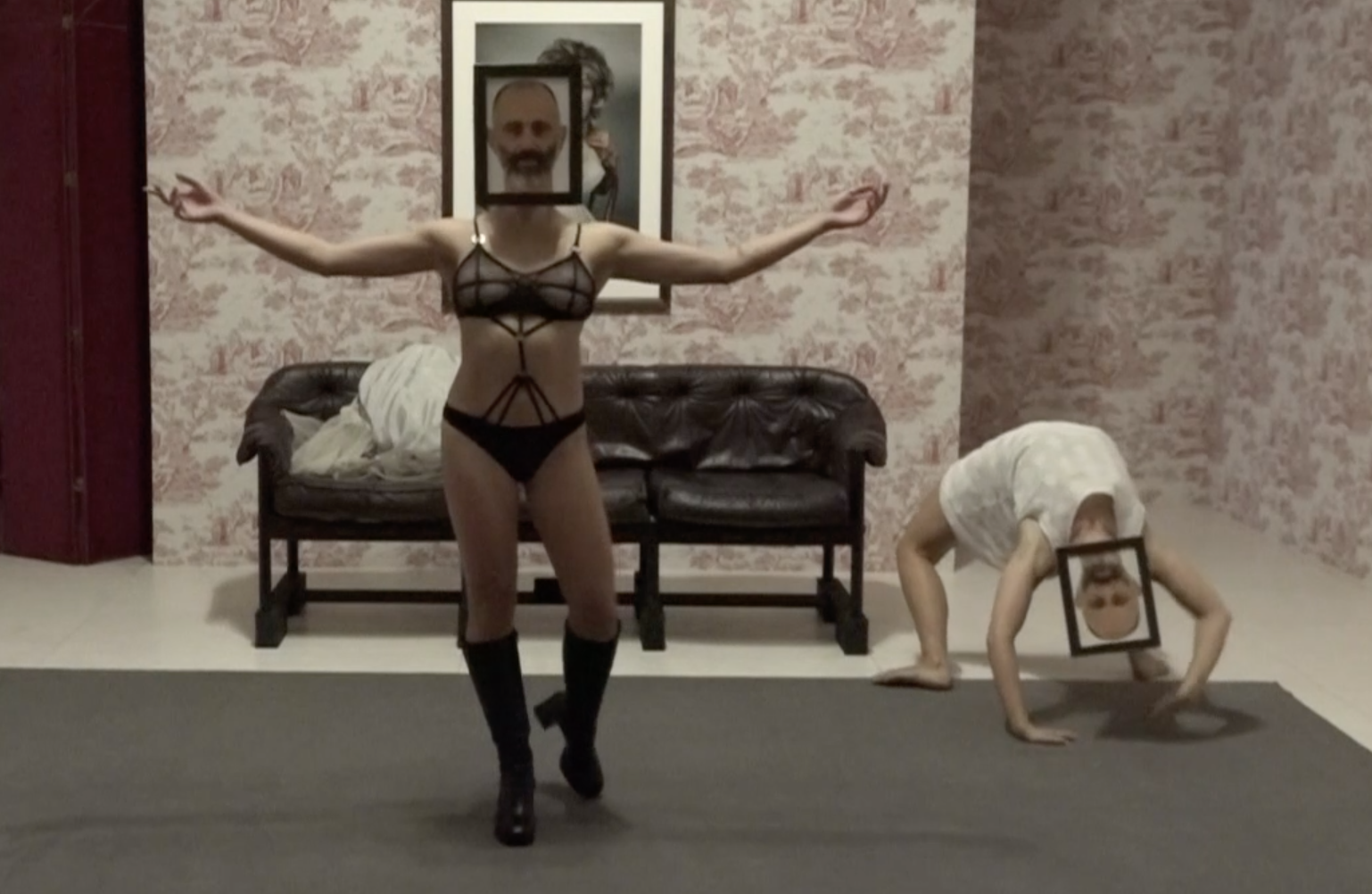Too Shy To Stare is 2 hour performance for 10 people at a time. There are 7 rooms that give you different experiences. REFLECTION is a separate piece where I just present just one room. For both of these pieces we have the audience come an hour before the performance where we take a “Mona Lisa Smile” photograph of the face of the audience. We then put this photograph in a special mask I have built and we create the illusion that the audience is performing for themselves.
+ Performed last year along with the Cindy Sherman exhibition in the Serralves museum in Porto, Portugal.

Too shy to stare should be seen as a performance/ installation where an audience of 10 is invited to see 7 different scenes one at a time. Everyone starts in a ”bar” we create and given 7 cards of different colours. The piece begins with this introduction.
”Welcome to Too shy to stare. There are 7 rooms we want to share with you this evening. (I point the rooms out) Now you notice the lights outside each room (there are two small lamps over the door of each room) now to enter a room you look for a green light that means the room is available. You pass your card through the curtain, wait, and when the light turns red you enter. A red light means a room is occupied and you shouldn’t enter. Now you have 6 cards because the 7th room doesn’t need a card, as it is an installation with these headphones you’ll find at the bar. You put them on and walk around the room and discover how the installation works. Now tonight you create your own dramaturgy. You can go in any order of how you see the scenes and this then will be your show. Remember there’s no rush; take you time and feel free to come back to the bar throughout the show to have a break. Thank you for coming and enjoy the show.”
The cards we hand out let the performers know which photograph to use, but also give control to the audience where they can guide their journey through the space themselves. Each person creates a different order of scenes therefore contributing to their own personal experience of the show. During these scenes the performers wear masks, which hold photographs of the audiences face so it seems as though you are performing for yourself in almost every room. Each scene is under 10 minutes and with no breaks is 70 minutes but the audience needs to take their time and set their own pace. In each of our shows we’ve had very strong reactions from the audience. Some people cried others couldn’t stop laughing. What makes ”Too shy to stare” unique is that everyone is affected differently depending on their own psychological make up. The material we made gives general directions but the specific gestures are open doors for the audience to interpret their own way depending on their life experience. While one sees the ”couple scene” to represent their male and female side, another sees their parents. While one sees the music scene as a moment of internal meditation another sees their own funeral. The performers themselves repeat their same scene for all the audience members while each time changing their masks. Once they have performed their last scene each performer joins the audience in the bar who ask questions and share their experience of the show.